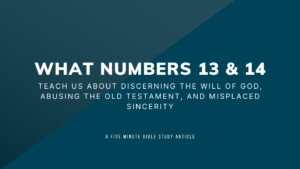Introduction
This is a rather random article, but I just got done reading the Gospels through again, and this time I decided to have a notepad and pencil in hand. In previous trips through the Gospels, it caught my attention when a gospel writer would stop to make clarifications to his audience about Jewish customs or the translation/meaning of certain Aramaic words. However, I have never found a resource that takes notice of this and catalogues these occurrences. You will often hear people talk about the audiences of each gospel as if we know these things for certain. For example, it’s very common to hear scholars and laypeople alike say that Matthew wrote to a Jewish audience,* Mark wrote to a Roman audience,** Luke wrote to a Greek audience, and John wrote again to a Roman audience. I had always heard this said as long as I can remember, but it wasn’t till I was about 21 years old that I looked for the evidence of these things. Well, this brief article isn’t about giving the evidence for each book’s audience, but it is about helping average readers like you to understand how theories like this develop, and I am going to give you some very specific internal evidence from John’s gospel to corroborate a sound theory for who his audience likely was. As for the other gospels, I will simply say that I agree with the traditional explanations of Matthew and Mark’s audiences, though I have my reservations that Luke wrote primarily to Greeks. But that’s for another time. Now, let’s get into those specific evidences that caught my attention while reading the gospel of John.
Specific Evidence for John’s Audience
If you pay attention while reading John’s gospel, you will notice quite a few places where he interrupts the flow of his writing to explain certain Jewish customs and the meaning of certain Aramaic words. If you’re not looking for this, it’s very easy for these things to just slip by you. But consider what significance this plays in determining who John was writing to. Doesn’t it make sense that is John was writing to a Jewish audience, he wouldn’t have to explain these things? But if he was writing to a Roman audience or simply a Gentile audience that wasn’t necessarily familiar with Jewish culture, customs, and geography, it would make a lot of sense to stop and explain things along the way. Notice the following catalogue where John does this very thing.
John 1:38 “They said to Him, ‘Rabbi’ (which is to say, when translated, Teacher)…”
John 1:41 “‘We have found the Messiah’ (which is translated, the Christ).”
John 4:9 “Then the woman of Samaria said to Him, ‘How is it that You, being a Jew, ask a drink from me, a Samaritan woman?’ For Jews have no dealings with Samaritans.”
John 4:25 “The woman said to Him, ‘I know that Messiah is coming’ (who is called Christ). ‘When He comes, He will tell us all things.'”
John 5:2 “Now there is in Jerusalem by the Sheep Gate a pool, which is called in Hebrew, Bethesda, having five porches.”
John 6:1 “After these things Jesus went over the Sea of Galilee, which is the Sea of Tiberias.”
John 7:2 “Now the Jews’ Feast of Tabernacles was at hand.”
John 9:7 “And He said to him, ‘Go, wash in the pool of Siloam’ (which is translated, Sent). So he went and washed, and came back seeing.”
John 11:18 “Now Bethany was near Jerusalem, about two miles away.”
John 11:55 “And the Passover of the Jews was near, and many went from the country up to Jerusalem before the Passover, to purify themselves.“
John 19:13 “When Pilate therefore heard that saying, he brought Jesus out and sat down in the judgment seat in a place that is called The Pavement, but in Hebrew, Gabbatha.”*
John 19:17 “And He, bearing His cross, went out to a place called the Place of a Skull, which is called in Hebrew, Golgotha.”
John 19:31 “Therefore, because it was the Preparation Day, that the bodies should not remain on the cross on the Sabbath (for that Sabbath was a high day), the Jews asked Pilate that their legs might be broken, and that they might be taken away.”
John 19:40 “Then they took the body of Jesus, and bound it in strips of linen with the spices, as the custom of the Jews is to bury.”
John 19:42 “So there they laid Jesus, because of the Jews’ Preparation Day, for the tomb was nearby.”
John 20:16 “She turned and said to Him, ‘Rabboni!’ (which is to say, Teacher).”
This may prove to be nothing more than a novel and interesting little piece of research, but any insight we can get into the original audience of a book of the Bible helps shape how we read the book and sometimes may have an effect on how we lean in interpreting a given passage within the book. My conclusion from all these evidences in this article is that John’s gospel could not have been written to a Jewish audience, or at least not a primarily Jewish audience. If it was Jewish, it would have to have been a Hellenistic Jewish audience that had lost its Hebrew heritage and required frequent explanations from the Jewish Apostle John. These are the types of things that interpreters of the Bible are looking for when trying to decipher the audience of the gospels. Now take this and let it motivate you to see what other evidences you might find for John’s audience and the other gospels!
*Matthew does translate the name “Immanuel” in 1:23. This could have been because the common Jew in Matthew’s day spoke Aramaic and was unfamiliar with Hebrew as a written language. Or this could indicate that Matthew had a mixed audience. The heavy use of prophecy and “that it might be fulfilled which was spoken by the prophets…” formulas in the book cause me to lean toward a primarily Jewish audience for this gospel.
**There are several evidences in Mark’s gospel that point to a Roman audience, much like the examples given in this article for John’s audience. Here is a short list: Mark 5:41; 7:3-6, 34; 15:22, 34.
***Interestingly, if you compare the NKJV of John 19:17 with some other translations like the CSB and NIV, they latter translate the word “hebraisti” as “Aramaic” instead of “Hebrew.” It is commonly understood that the common language among the Jews by the times of Jesus was Aramaic. This word comes from the root word “hebrais” for which BDAG has this comment in the lexical entry, “These passages refer to the Aramaic spoken at the time in Palestine… [Some scholars] hold that some form of Hebrew was commonly spoken.” (Bauer, Walter, et al. A Greek-English Lexicon of the New Testament and other Early Christian Literature–Third Edition. University of Chicago Press, 2000)



